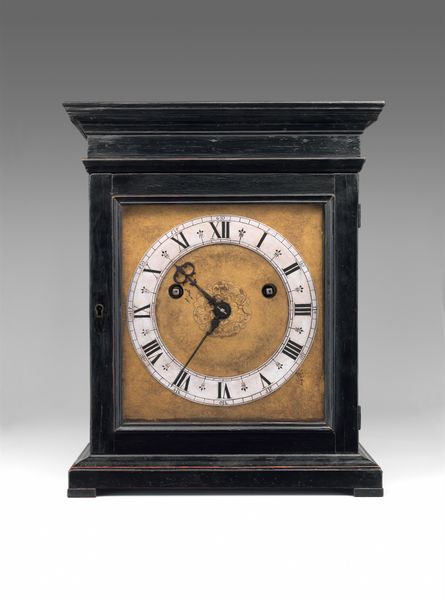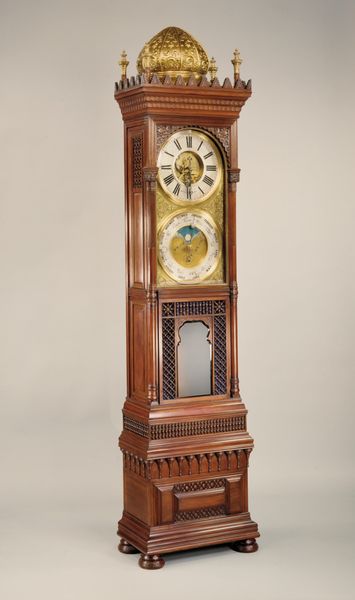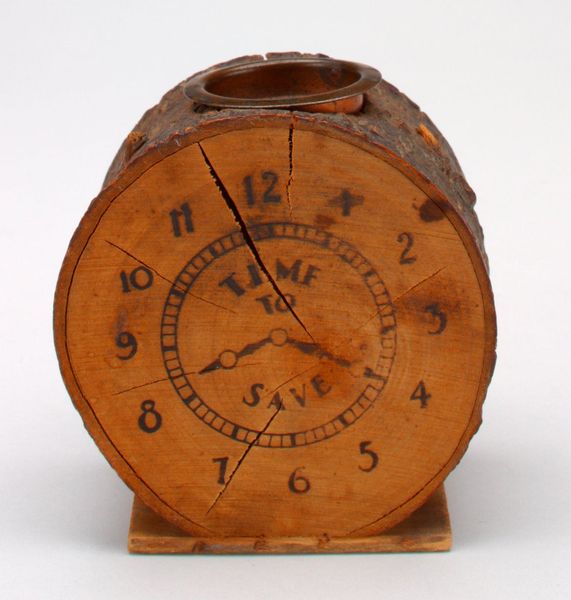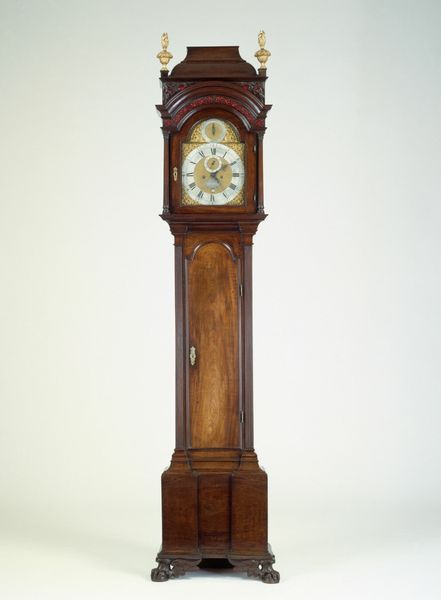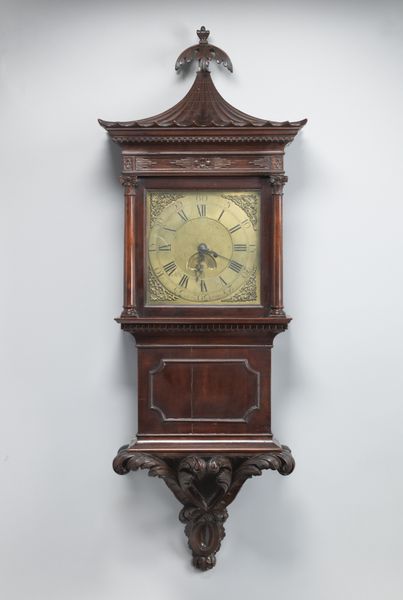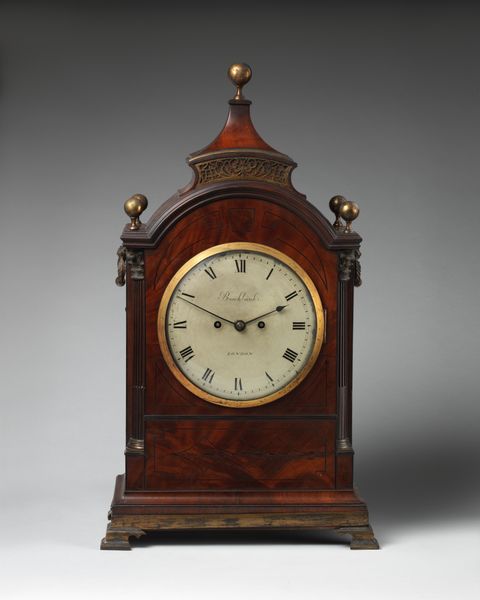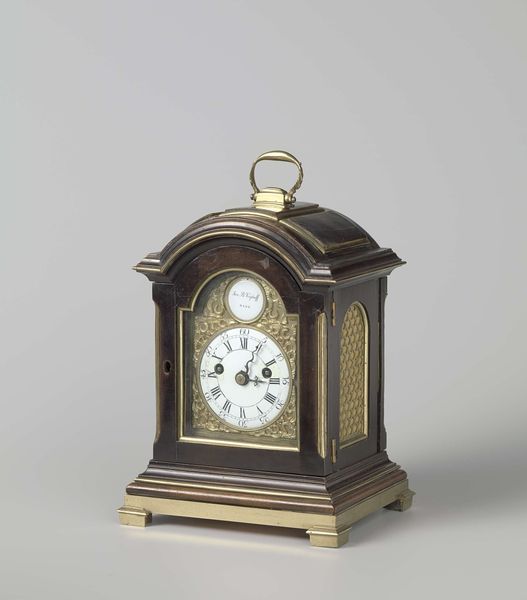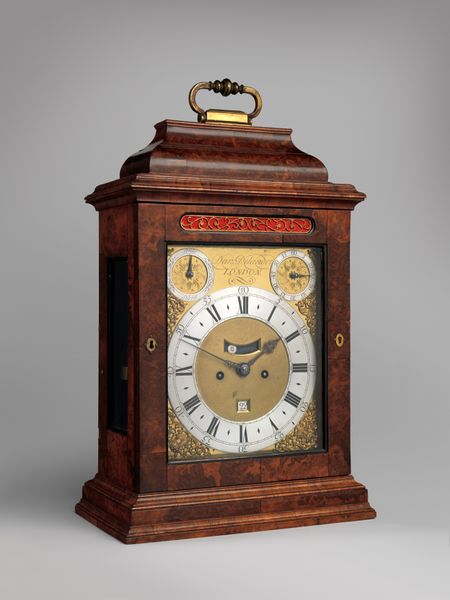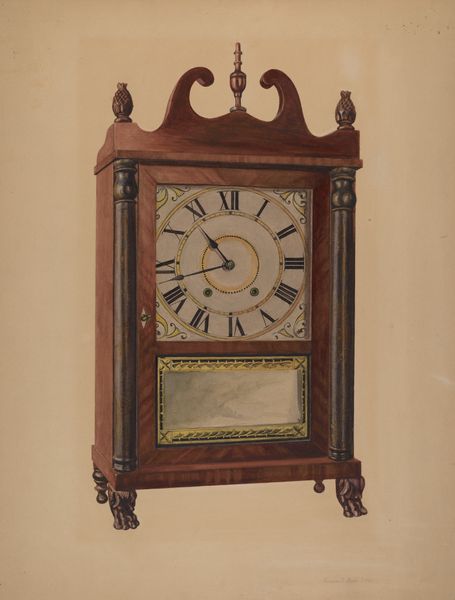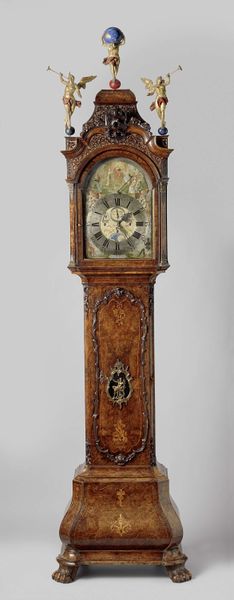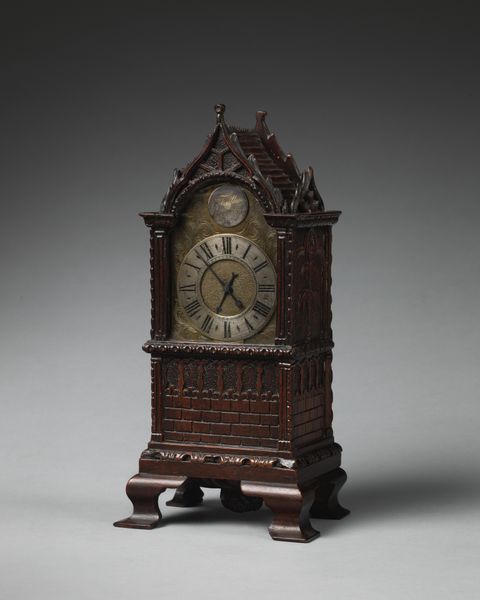
metal, glass, sculpture
#
metal
#
sculpture
#
glass
#
sculpture
#
decorative-art
Dimensions: 5 15/16 x 5 13/16 x 3 in. (15.08 x 14.76 x 7.62 cm)
Copyright: Public Domain
Editor: Here we have a metal and glass "Mantle Clock" still bank, likely from the 20th century. The decorative work on the metal gives it an almost medieval quality, but the clock face itself feels much more modern. What symbolic weight do you think a piece like this carries? Curator: The fascinating tension you've identified—between the archaic decorative flourishes and the modernist clock face—speaks volumes. Clocks, throughout history, haven’t just told time. They’ve represented power, control, and even anxieties surrounding mortality. Do you see the ornate metalwork as an attempt to reconcile those anxieties, a kind of visual 'armor' against the relentless march of time? Editor: I hadn’t considered that! Maybe it's meant to give the clock a sense of timelessness, despite it measuring time. It's interesting to consider how something designed to measure time could simultaneously try to defy it. Curator: Exactly. And then factor in its function as a ‘still bank’ – a repository for money. Clocks marking time, banks holding wealth… both speak to a desire for order and control, yes? Perhaps this object embodies both personal financial security and the bigger rhythms of industrial life. Editor: So, the act of putting money in the bank almost becomes a ritualistic way of participating in that control, with the clock as a reminder of the system? Curator: Precisely. The imagery asks: How do objects create cultural meaning through these layers of association and intended use? Editor: I never would have seen all of that by myself. It's fascinating how much an everyday object can reveal! Curator: Indeed. It's about unlocking the narratives embedded in the symbols around us.
Comments
No comments
Be the first to comment and join the conversation on the ultimate creative platform.
